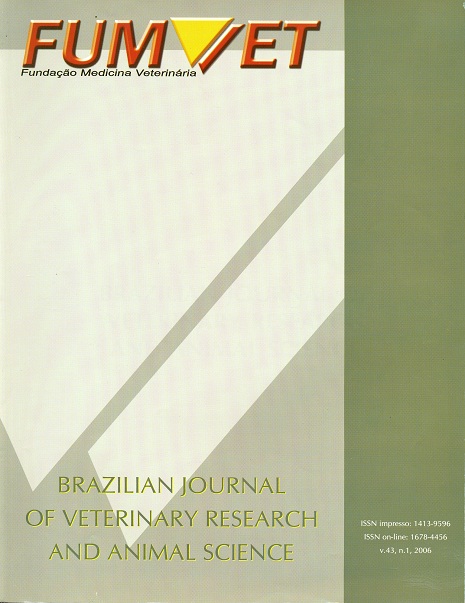Morphometric study of the neurons in the caudal mesenteric ganglion of the dogs during the post- natal development (maturation and aging)
DOI:
https://doi.org/10.11606/issn.1678-4456.bjvras.2006.26518Keywords:
Aging, Neurons, Caudal mesenteric ganglion, Morphometric, DogsAbstract
The aging is characterized by a progressive decline of neuronal function that involves both the central and the peripheral nervous system. Aging process is accompanied by changes in the number and size of neurons. However, these data are controvesial and poorly known in the peripheral ganglia. In this way, the present investigation aimed to study the dog's caudal mesenteric ganglion (CMG) in two different phases of aging (maturation and aging), looking for morphometric alterations in the neurons. The importance of the CMG is associated with the innervation of the lower large intestine, internal anal sphincter and partially the urogenital system. To the study, was used nine males, mongrel, domestic dogs, divided into three different well defined aged groups (1-2 months, 1-3 years old, 5-10 years old). The ganglia were processed for light microscopy study and the morphometric analyses were done using morphometric analyses software KS 400 Zeiss®. The increase of age was caractherized by an increased in size of neuron and nucleu. Concerning about nucleus-citoplasmic relation, this decrease with the age.Downloads
Downloads
Published
2006-02-01
Issue
Section
UNDEFINIED
License
The journal content is authorized under the Creative Commons BY-NC-SA license (summary of the license: https://
How to Cite
1.
Gagliardo KM, Ribeiro AACM. Morphometric study of the neurons in the caudal mesenteric ganglion of the dogs during the post- natal development (maturation and aging). Braz. J. Vet. Res. Anim. Sci. [Internet]. 2006 Feb. 1 [cited 2025 Apr. 5];43(1):57-64. Available from: https://revistas.usp.br/bjvras/article/view/26518





